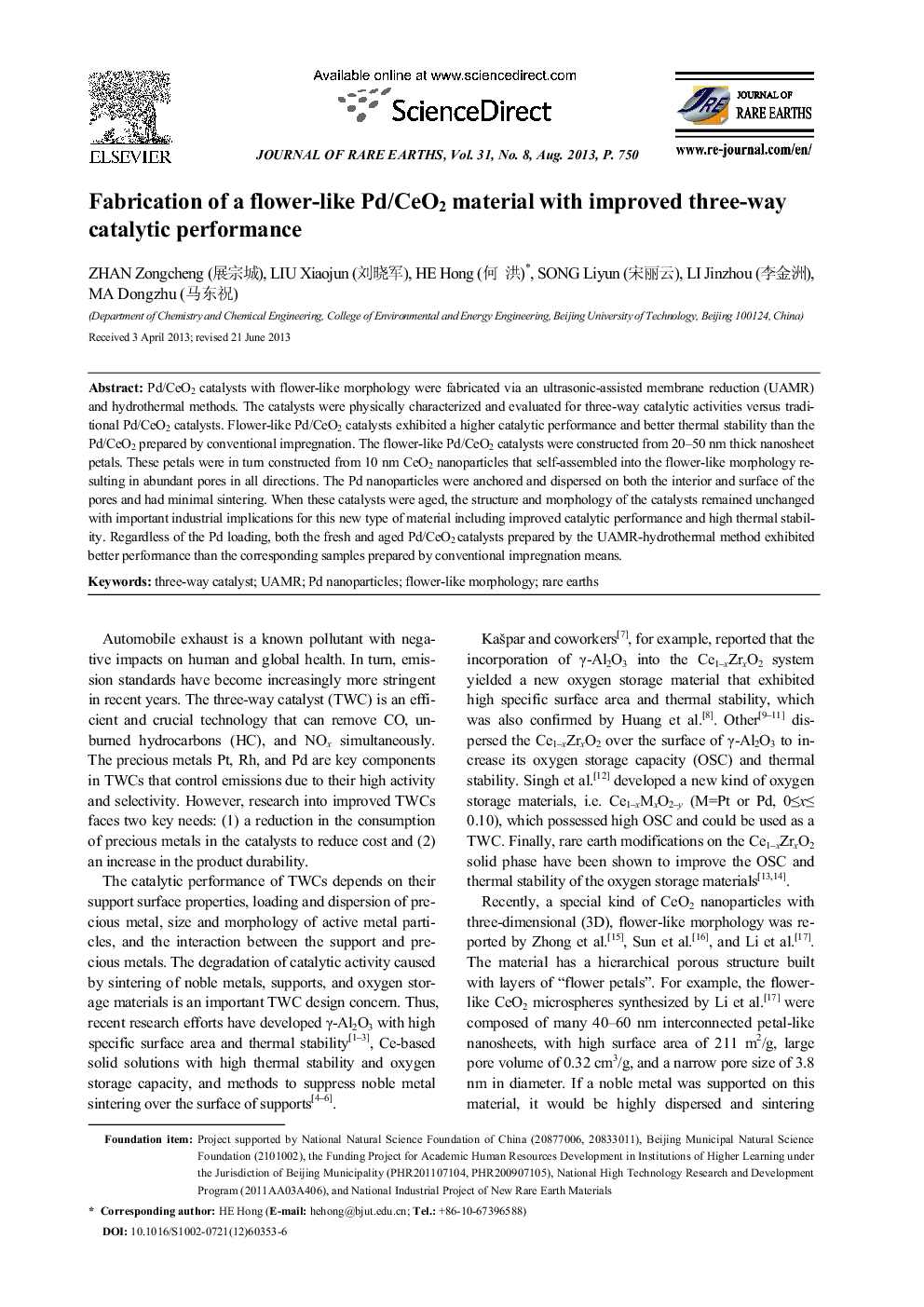| Article ID | Journal | Published Year | Pages | File Type |
|---|---|---|---|---|
| 1258614 | Journal of Rare Earths | 2013 | 9 Pages |
Pd/CeO2 catalysts with flower-like morphology were fabricated via an ultrasonic-assisted membrane reduction (UAMR) and hydrothermal methods. The catalysts were physically characterized and evaluated for three-way catalytic activities versus traditional Pd/CeO2 catalysts. Flower-like Pd/CeO2 catalysts exhibited a higher catalytic performance and better thermal stability than the Pd/CeO2 prepared by conventional impregnation. The flower-like Pd/CeO2 catalysts were constructed from 20–50 nm thick nanosheet petals. These petals were in turn constructed from 10 nm CeO2 nanoparticles that self-assembled into the flower-like morphology resulting in abundant pores in all directions. The Pd nanoparticles were anchored and dispersed on both the interior and surface of the pores and had minimal sintering. When these catalysts were aged, the structure and morphology of the catalysts remained unchanged with important industrial implications for this new type of material including improved catalytic performance and high thermal stability. Regardless of the Pd loading, both the fresh and aged Pd/CeO2 catalysts prepared by the UAMR-hydrothermal method exhibited better performance than the corresponding samples prepared by conventional impregnation means.
Graphical abstractSEM images of the fresh Pd/CeO2-UH catalysts with Pd loadings of 0.0 wt.%Figure optionsDownload full-size imageDownload as PowerPoint slide
